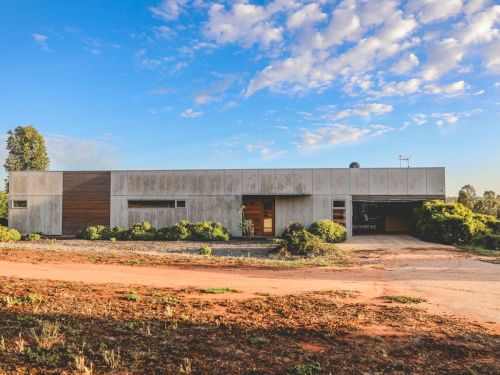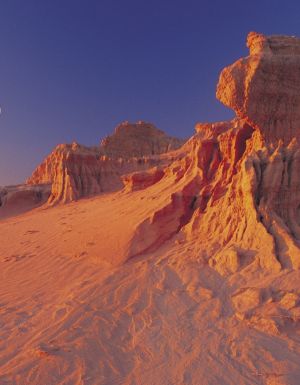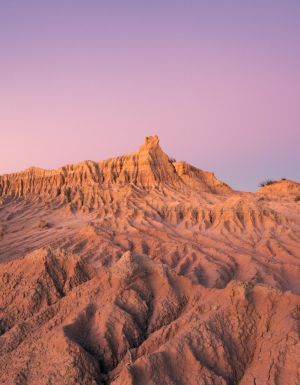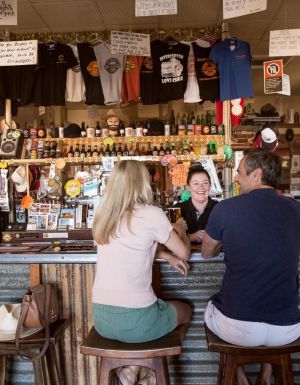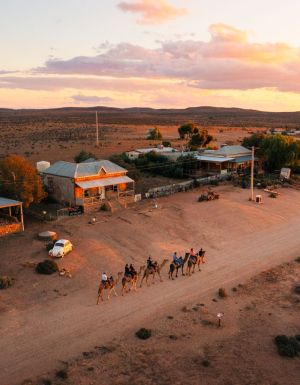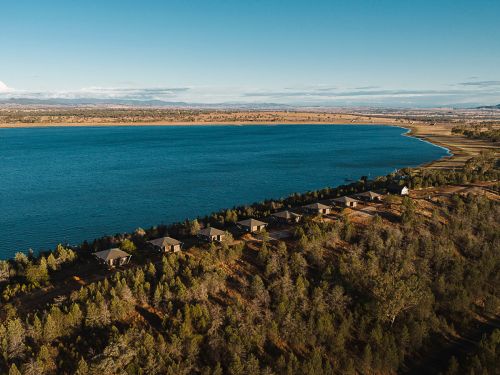In the Murray region on the border of outback NSW/Victoria, community connection runs as deep as the ancient river flowing through it.
I’m taking menu suggestions from owner Katrina Myers moments after arriving at the luxurious Lost & Found Retreat in Barham, NSW, around an hour’s drive from Echuca in Victoria. The sleek and sustainable retreat was built in 2015 and it’s the perfect place to disconnect.
She’s just recommended the pork at Ivy Joyce, the hip restaurant I’m headed to later that night. “And if you like that, you’ll love this. It’s from the same place," says Katrina, stacking a packet of Bundarra bacon on top of my already overflowing arms, filled with locally sourced eggs and fresh bread. Ivy Joyce is owned by Kat’s friend, Lauren Mathers, and is known as another Murray region jewel.

A local’s welcome
When I arrive at Ivy Joyce later that evening, I do as Katrina suggests and order the BBQ Bundarra pork denver with baked yams, broccolini and cocoa jus from the menu. Lauren, host and co-owner of Ivy Joyce with longtime friend Cynthia Burbury, talks me through the menu as the pork practically melts on my tongue. “All of our produce is local, either from us or local businesses. The pork is from Bundarra, my family’s farm. If you have any free time while you’re here, come visit! The piglets are adorable."
I feel like I’m talking to an old friend despite knowing Lauren for all of half an hour, and when she gets up to order me another piña colada, I almost feel like telling her to grab one for herself before remembering that she’s here to work.
After my visit from Katrina earlier and now my piglet-snuggling invitation from Lauren, I already feel like one of the locals. It’s a feeling that becomes familiar over my next three days in the Murray region of south east Australia, where strangers are welcomed as friends.
The Murray River
Barham (pronounced Bah-rum) sits on the banks of Australia’s longest river, the 2508-kilometre Murray, which acts as a natural border between NSW and Victoria. The Murray has long been a lifeline for the region, with communities building their lives along its shores for centuries.
The next morning – as I enjoy Katrina’s delicious delivery of local produce – I’m pondering the curvatures of the river while relaxing on the back deck, an exposed cement platform spattered with wide-leaved potted palms, wooden finishes and a solitary swinging wicker chair.

The sun is still rubbing her eyes awake, her half-powered light casting faded gold and blue-tinged pinks across the weed meadow growing beyond the garden of clumped wild daisies. The constant dull buzz of bees intertwines with the warble of magpies as they flit through a grove of trees to my left, just a fraction of the orchard that makes up the family-run Barham Avocados farm.
“Ah, Barham Avocados. You must be staying at Katrina’s new retreat." Fifth-generation farmer Peter McDonald’s voice comes to me loud and clear through my headset. We’re exchanging pleasantries as we ascend above the vast, arid landscape and the snaking Murray River in a four-seater Cessna 172S. I’m not surprised to hear that Peter and Kat go way back.

The view from above
From my window, I can still see the effects of the unprecedented flood that devastated the region between November 2022 and February 2023. Vibrant fields of canary-yellow canola flowers spring back to life against still-broken red gums and demolished agricultural lands. Peter, who has been flying since his training as a commercial pilot in 2007, saw the destruction firsthand. He started Murray Darling Scenic Flights in 2022, after Covid-19 had hit and only a few months before the flood.

“I started out doing one to two flights a week, but during the flood, I was flying around three times a day. People wanted to see what was happening from above."
I’m breathless as we loop around the pastel-pink Lake Tyrrell, over mallee gums and ancient wetlands, the Murray River and all its offshoots never too far from sight. But as stunning as the panoramic aerial views are, some things are better seen from the ground.

Roots run deep at Restdown Wines
I pull up next to a dusty ute and am instantly giddy about the dog in its tray. The sun is beating down and I’m already swatting flies out of my face when I open the car door, but nothing can distract me from making friends with the kelpie. I let her sniff my hand before scratching her head, a welcomed gesture that makes her behind wiggle harder from frantic tail wags. “That’s Gracie. She’s excited to meet you."

I look up to see a man in dusty jeans, boots and a well-loved hat. Don Hearn greets me with a firm handshake and the kindest smile; he co-owns the 450-hectare Restdown Wines vineyard in Thule with his wife, Jo. “We’re on Barapa Barapa Country here," Don tells us as we begin the trail around the winery’s dedicated wetland system on our guided walk. And the evidence is everywhere, from earth mounds used for cooking to scar trees dating back hundreds of years. Don and Jo work closely with the local Barapa Barapa community to ensure it stays that way.

After learning so much with Don outside, we sit down in the cellar door for a crash course on wine from Jo. Gracie lies outside, worn out from her adventure through the wetlands with us. Over sips of wild merlot produced at Restdown Wines’ vineyard, I discover, much to my amusement, that Don’s dad was pilot Peter’s first football coach.

My partner and I burst out in simultaneous laughter – on our way to the vineyard we’d joked that someone we had met along the way would inevitably know whoever we were about to meet. We were right, and glad about it – the veins of this community run deep, just like the river that pumps through its heart.

A community like no other
While this vast, arid and plentiful land is rare and wonderful, the people here are unlike any I’ve experienced elsewhere. An interconnected web of kindness and generosity. A willingness to help out a neighbour, whether that be dropping off extra vegetables, flying friends over floods, or simply coaching a couple of football games.
As I fly out of Bendigo back to Sydney, I feel the plane subtly level out and I’m back in that Cessna, watching Peter handle it with ease over the undulating lands of country NSW/Victoria. I’m thinking about the people I’ve met and, with a shock, realise that I never made it out to snuggle Lauren’s piglets. But I quickly settle back into my seat. I know these kinds of invitations, from these kinds of people, don’t have a deadline. I can stop by when I’m next in town.



